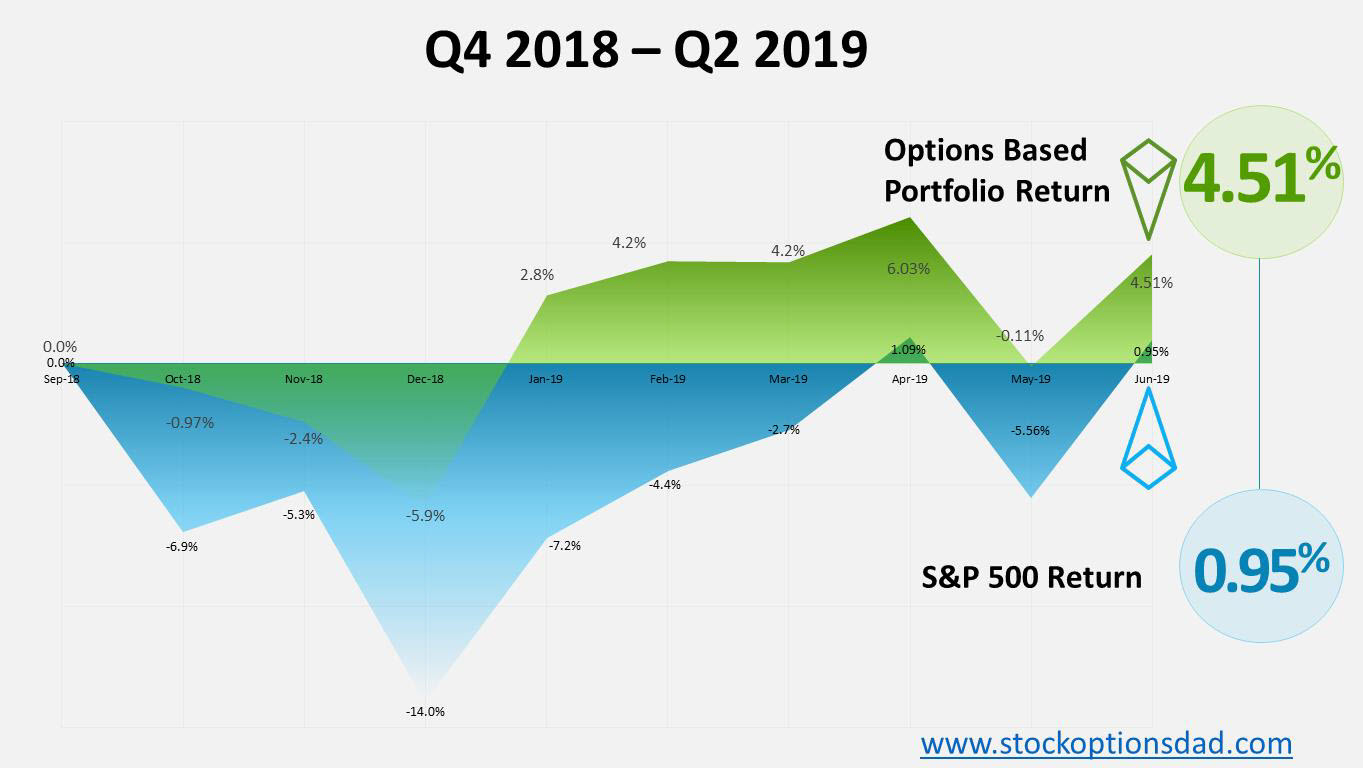Options trading can serve as a powerful means to generate consistent income and mitigate portfolio risk while producing high probability win rates. Options trading allows one to profit without predicting which way the stock will move. Options aren’t about whether or not the stock will move up or down; it’s about the probability of the stock not moving up or down more than a specified amount. Options allow your portfolio to generate smooth and consistent income month after month without predicting which way the stock market will move. Options are a bet on where stocks won’t go, not where they will go. Running an option-based portfolio offers a superior risk profile relative to a stock-based portfolio while providing a statistical edge to optimize favorable trade outcomes. Options are a long-term game that requires discipline, patience, time, maximizing the number of trade occurrences and continuing to trade through all market conditions.
Put simply; an options-based approach provides a margin of safety with a decreased risk profile while providing high-probability win rates. Despite this favorable trading backdrop, occasionally options can be assigned and move against you despite managing the risk profile. How do you manage these unrealized losses and navigate these assignments to mitigate downside risk and ultimately sell your assignment at a net gain? This is the scary side of options that is rarely talked about, here I’ll demonstrate the actions I take to manage these assignments.
Assignment
Even though options trading provides a statistical advantage and generates high probability win rates, being assigned shares inevitably occurs. Briefly, when selling a put option, you agree to buy shares at an agreed-upon price (strike price) by an agreed-upon date (expiration) in exchange for premium income.
You collect premium income to compensate you for agreeing to buy shares at the agreed price by the agreed-upon date. As the contract lifecycle unfolds and the stock does not break below the strike price, profits can be realized early by buying-to-close or letting the contract expire to capture the entire premium. When the stock breaks down and trades below the agreed-upon price at expiration of the contract, the stock will be assigned. Continue reading "Your Option Contract Was Assigned - Now What?"


